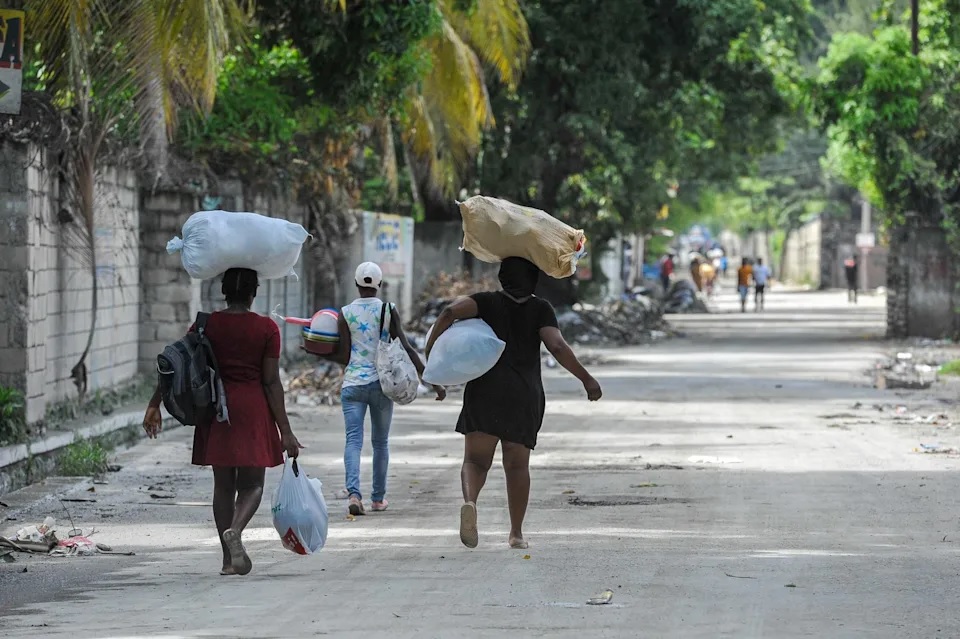RIO DE JANEIRO, BRAZIL – The clashes between gangs that have been raging in Port-au-Prince since last Sunday, April 24, continue to cause a massive exodus of people to seek safety from the armed conflict that has caused the death of at least 20 civilians between April 24 and 27, according to Civil Protection data.
Hundreds of people have fled the neighborhoods of Butte Boyer, Croix-des-Missions, Pantano, and Mapou, which have been a battleground for the past five days between the 400 Mawozo armed group and the rival Chen Mechan gang, who are fighting for these territories.
During the fighting, gang members loot and set fire to homes, leaving entire families homeless, most of whom are in shelters, while others have settled in makeshift settlements such as the Tabarre Town Hall, Radio Commerce (Sarthe), the Adventist Church, Village Ti Baka (Butte Boyer), or Hugo Chavez Square.

Another of the sites where these “refugees” have landed is Clercine Square, located a few hundred meters from the front line, where a man who identified himself as Woodens told Efe that he had been in the street for five days.
“My house is in ashes. I’ve lost everything. We are sleeping in the street” as a result of “this war,” in the face of which “the authorities can do nothing. I have no expectations from the authorities,” we “want a place to sleep,” he implored.
Similar is the story of Rosmine Forcilus, who fled Butte Boyer with her children: “Hunger is killing us,” but “I don’t want to go back to the area. I want to go live somewhere else. The same goes for Pierre Wilguens, who defines himself as “a war refugee”.
Many fled before their homes were destroyed. That is the case of Iramène Pierre, who, since Sunday, has been on the street “with the same panties on” and who manages to eat something thanks to the charity of other people.
“The area is at war. Yesterday, a bullet went over my head, and I didn’t die, thank God. I want to find the financial means to be able to rent a house somewhere else,” said the woman, whose priority is to get her children to safety.
People who have set up makeshift shelters in Clercine Square “are exposed to significant risks,” particularly women and girls, at risk of “gender-based violence,” according to the latest report by Civil Protection (DGPC) and the UN Office for the Coordination of Humanitarian Affairs (OCHA).
The text warns that “the conflict could intensify in the coming days and cause new victims” and “additional population movements”.
In this context, access to the country’s north via national roads “could be blocked”, which would isolate all departments from the capital like Route 2, which connects the southern departments, remains blocked by persistent insecurity.
Since August 2020, clashes between armed gangs for control of territories in the Port-au-Prince metropolitan area have caused numerous civilian casualties and displaced thousands of Haitians.
In June 2021 alone, 19,000 people had to flee the fighting in the districts of Martissant, Bel’Air, and Bas-Delmas, of whom 5,500 remain displaced, according to data from Civil Protection and the United Nations.
With information from EFE

